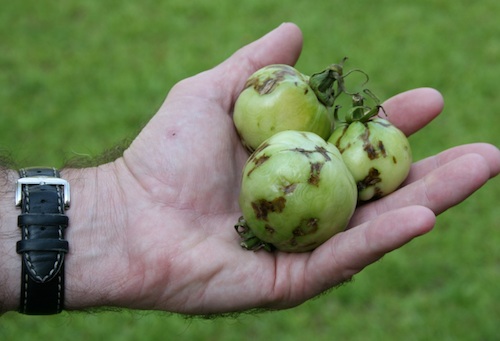Once a major threat to the tomato industry, the thrips-vectored tomato spotted wilt virus (TSWV) has been unable to penetrate the vegetable’s latest line of defense — resistant cultivars.
Scientists from the University of Georgia, University of Florida and Clemson, North Carolina State universities have collaborated over the last two decades in an effort to try to alleviate what had become a deadly problem. The results have proven to be beneficial and profitable for tomato growers.
“If we didn’t come up with a solution, it would have killed the tomato industry in Georgia,” said David Riley, a professor of entomology with the UGA College of Agricultural and Environmental Sciences in Tifton.
Riley is the team leader of the RAMP (Risk Avoidance and Mitigation Program) Project, which compiled data showing that an estimated $9 million was lost in tomato and pepper from 1996 to 2006. The spotted wilt virus had a disastrous effect on the vegetable industry.
“It was bad. If you go back 10 years ago, there were fields that had complete yield loss,” Riley said. “Once you get so much damage in a field, at some point, it becomes uneconomical to go in and harvest it. With a tomato crop, nearly half of your production cost is tied up in that harvest cost. Once your production goes down too low from disease, they’ll just cut it loose and not even go in there. So, not only do the growers lose their tomato crop, temporary workers lose jobs.”
Ten years ago, the tomato crop in Georgia would have been wiped out if resistant varieties weren’t available, he said.
Today, Georgia’s vegetable industry, including the state’s tomato and bell pepper fields, is worth $781 million and accounts for about 10,200 jobs across the state, according to the most recent Georgia Farm Gate Value Report.
TSWV dates back almost 40 years when it was discovered in peanuts in Texas. It was later found in Louisiana and Alabama. In the 1990s, the virus was detected as a major problem in such Georgia crops as peanuts, vegetables and tobacco.
Eventually, resistant cultivars (tomato varieties that possess the resistant gene) stopped almost all losses from the disease. Based on a 2008-2009 survey conducted by Riley and his team, 75 percent of farmers in Georgia, Florida, South Carolina and North Carolina were using an improved method of growing tomatoes, which included resistant cultivars.
Seventy-one percent of those responding were satisfied with their crop’s production. According to the USDA TSWV RAMP Project website (www.tswvramp.org) resistant cultivars prevent plants from wilting, which greatly increases the crop’s yields. These cultivars also reduce irregular ripening of fruit.
Controlling the TSWV is a step in the right direction for tomato growers, but it didn’t totally solve the problem of thrips, the small insects that can transmit the virus.
“There’s still a little bit of a problem left with thrips themselves because western flower thrips can come in late season and feed directly on the fruit,” Riley said. “Even if it’s a resistant cultivar, you can still have some virus symptoms show up on the fruit. For the most part, the problem of major yield loss in tomato has been solved in Georgia.”
Riley added that the best way to control late-season western flower thrips is achieved with products like spinetoram.








